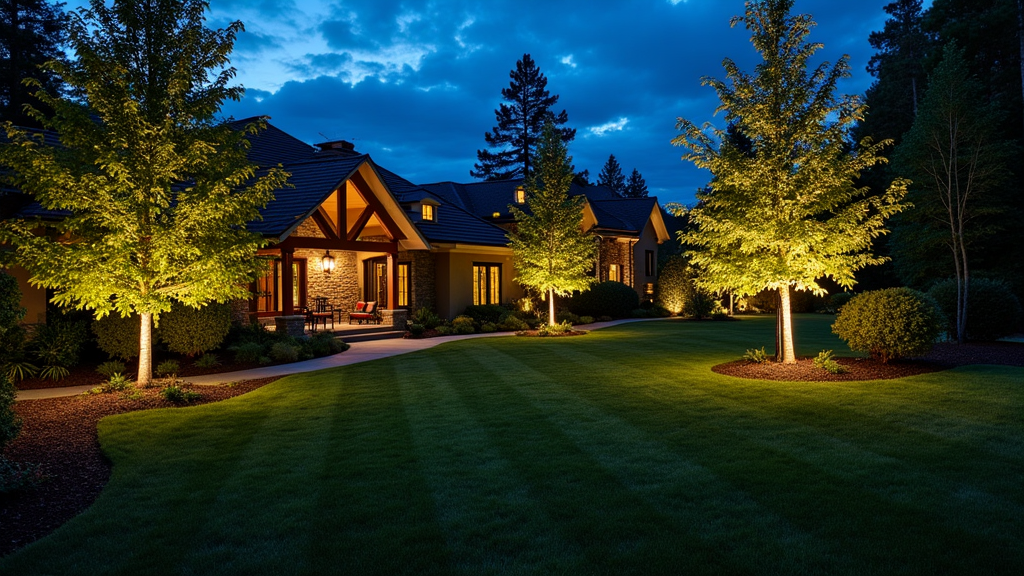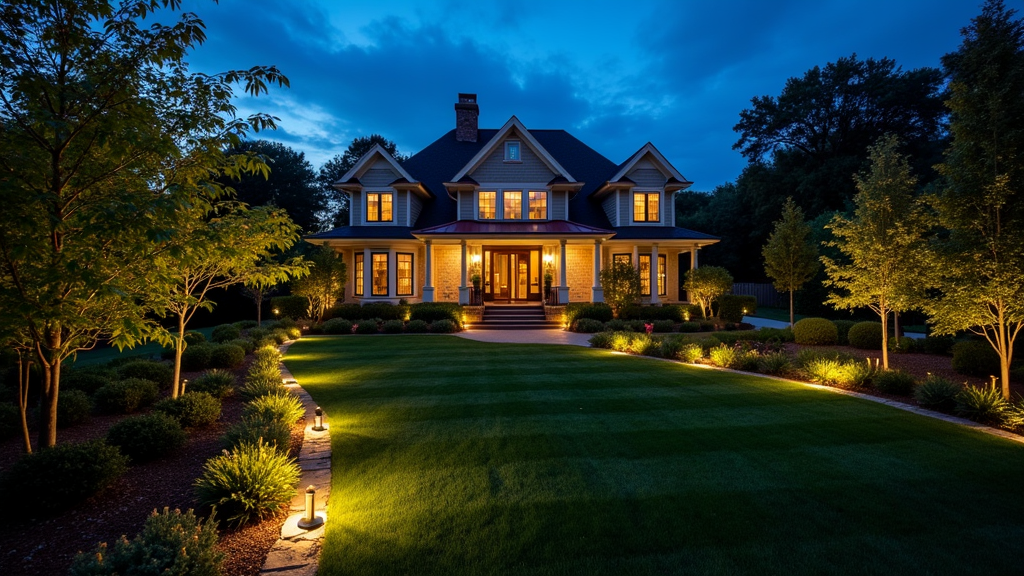Introduction
Living in small spaces has become increasingly common, especially in urban environments where land is at a premium. Yet, these compact areas can be transformed into beautiful landscapes that not only enhance the aesthetic appeal of your home but also provide functional outdoor living spaces. The art of landscape design offers endless possibilities for maximizing small spaces, allowing you to create serene gardens, cozy patios, and vibrant balconies that reflect your personal style. In this article, we will explore various creative landscape design solutions tailored specifically for small spaces, focusing on practical tips and innovative ideas that can bring your vision to life.
Maximizing Small Spaces: Creative Landscape Design Solutions
When it comes to maximizing small spaces through landscape design, the key is to think creatively about how you utilize every square inch. Whether you're working with a tiny backyard, a compact balcony, or a limited front yard area, there are many strategies you can apply. From selecting the right plants to incorporating versatile furniture options, here’s how you can make the most of your space:
1. Understanding Your Space: Assessing Dimensions and Layout
Before diving into design choices, it's essential to assess your space's dimensions and layout. Take measurements and identify any existing features such as trees or structures that could influence your design.
- Measure Your Space: Use a tape measure to get accurate dimensions. Create a Scale Drawing: Sketch a scaled plan of your space to visualize potential layouts. Identify Sunlight Patterns: Observe sunlight patterns throughout the day; this will affect plant selection.
2. Choosing the Right Plants for Small Gardens
Plant selection is crucial when designing smaller gardens. Opt for plants that offer maximum impact without overwhelming the space.

2.1 Vertical Gardening
Vertical gardens are an excellent way to introduce greenery without taking up much ground space.
- Wall-mounted Planters: Install wall-mounted planters or trellis systems. Climbing Plants: Consider using climbing vines like clematis or ivy.
2.2 Dwarf Varieties
Look for dwarf varieties of trees and shrubs that fit well in confined areas.
- Dwarf Fruit Trees: These can provide fresh fruit while saving space. Compact Shrubs: Such as boxwoods or hydrangeas add structure without bulk.
3. Incorporating Hardscaping Elements
Hardscaping refers to non-living elements https://jsbin.com/jetawoyowi in landscape design and plays an essential role in maximizing small spaces.
3.1 Patios and Pathways
Creating defined areas within your garden can make it feel larger and more organized.
- Paver Stones: Use paver stones to create pathways that guide visitors through your garden. Multi-functional Patios: Design patios with built-in seating or storage solutions.
3.2 Fences and Borders
Fencing can define boundaries while adding privacy.
- Lattice Screens: Utilize lattice screens adorned with climbing plants for added greenery. Decorative Edging: Use decorative edging along flower beds for visual interest.
4. Furniture Choices for Small Outdoor Areas
Selecting furniture wisely is vital when designing outdoor spaces in small areas.
4.1 Foldable Options
Foldable furniture allows flexibility while conserving space when not in use.
- Foldable Chairs and Tables: These can be stored away easily after use.
4.2 Built-in Seating Solutions
Incorporate built-in seating around fire pits or along walls to maximize seating without cluttering the area.
5. Lighting Techniques for Atmosphere Enhancement
Proper lighting enhances ambiance while making smaller spaces feel inviting during evening hours.
5.1 String Lights
String lights add charm without taking up physical space:
- Hang them overhead or along fences for soft illumination.
5.2 Solar Path Lights
Solar path lights illuminate walkways effectively while being energy-efficient.
6. Creating Zones Within Limited Areas
Dividing your outdoor area into zones can create distinct purposes within a small landscape setting.
6.1 Dining Area vs Relaxation Zone
Designate separate zones for dining and relaxation by using different materials or colors in furnishings or hardscaping elements:
| Zone | Purpose | Suggested Features | |------|---------|--------------------| | Dining | Eating & Gathering | Table & Chairs | | Relaxation | Quiet Retreat | Benches & Cushions |
7. Using Color Wisely in Small Landscapes
Colors have psychological effects and can visually alter perceptions of size in landscape designs.
7.1 Light Colors Expand Spaces
Using light colors helps create an airy feel:
- Paint fences or walls in pastel shades.
7.2 Dark Colors Add Depth
Dark hues can create depth but should be used sparingly:
- Incorporate dark-colored pots against lighter backdrops for contrast.
8. Sustainable Practices in Landscape Design North Carolina Style
Incorporating sustainable practices into your landscape design not only benefits the environment but often reduces maintenance needs—a win-win!
8.1 Native Plant Selection
Choosing native plants is ideal as they require less water and maintenance:
- They attract local wildlife while adapting seamlessly to local climates (especially beneficial in North Carolina).
8.2 Rain Gardens
Implementing rain gardens helps manage stormwater runoff effectively:
- These gardens feature native plants that thrive on wet conditions while filtering pollutants from water runoff.
Frequently Asked Questions
1. What are some easy plants suitable for small spaces?
Some easy-to-maintain plants include succulents like aloe vera, herbs like basil or thyme, dwarf varieties of shrubs, and perennials like lavender—all perfect for a compact garden!
2. How do I choose furniture for my balcony?
Opt for foldable furniture or built-in seating options designed specifically for small balconies—these maximize usage without creating clutter!
3. Can I incorporate water features even if my yard is small?
Absolutely! Miniature fountains or birdbaths work beautifully in smaller landscapes—just ensure they’re proportionate to avoid overwhelming the space!
4. What's the best way to light a small garden?
Using solar-powered lights along pathways combined with string lights overhead creates an inviting atmosphere without taking up physical room!
5. How do I maintain my small garden efficiently?
Focus on selecting low-maintenance plants suited to your climate—regular pruning & proper watering schedules will keep upkeep manageable!
6.Am I limited in landscaping options due to my location?
Not necessarily! Many innovative landscaping techniques exist regardless of location—consulting local experts can help tailor solutions suited specifically to regional characteristics!
Conclusion
Transforming small spaces into vibrant landscapes requires creativity, thoughtful planning, and consideration of multifunctional elements within these areas—whether that's through plant selection, hardscaping features, or clever use of color! By applying some of these innovative solutions outlined here today—including sustainable practices particularized toward regions like North Carolina—you'll find yourself well-equipped with knowledge capable of maximizing every inch available at home! It’s all about turning limitations into opportunities; so roll up those sleeves & start designing!
